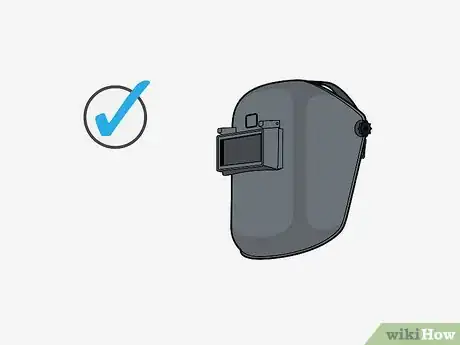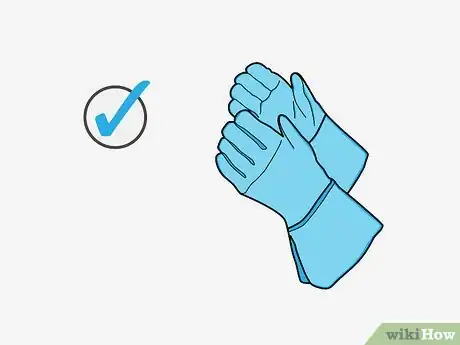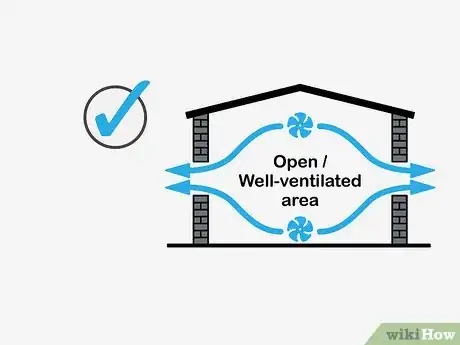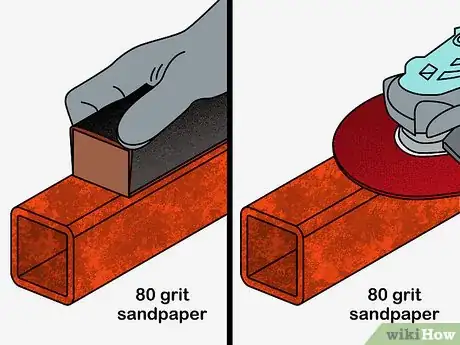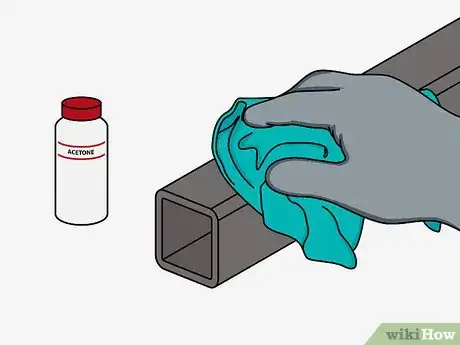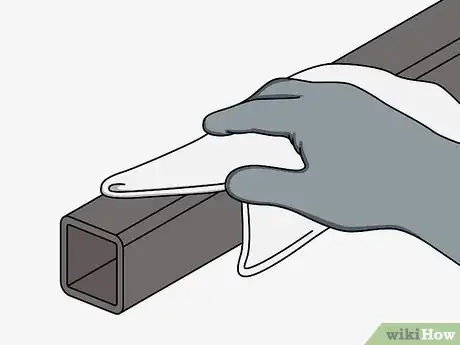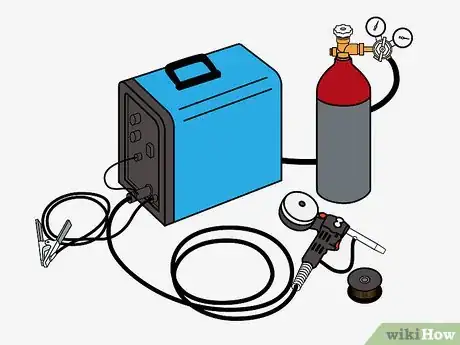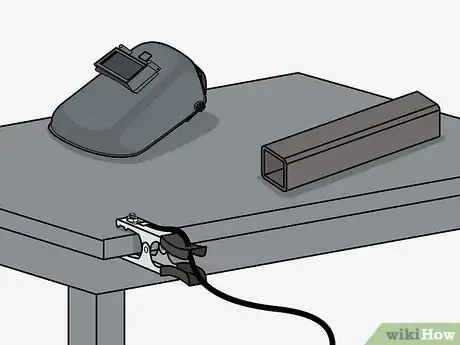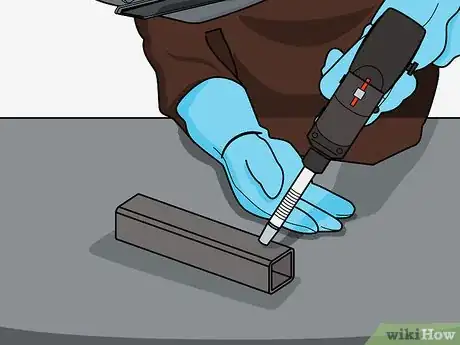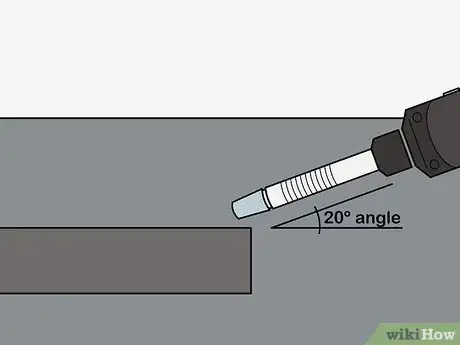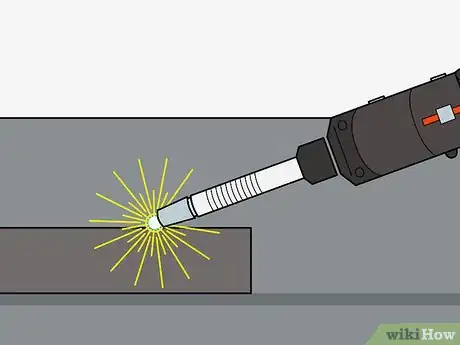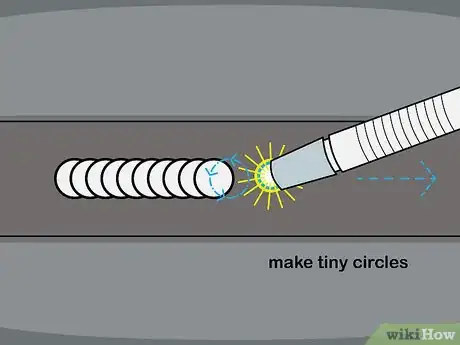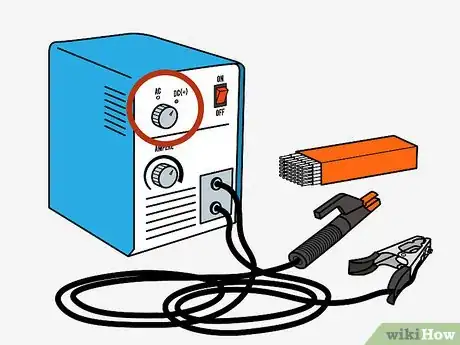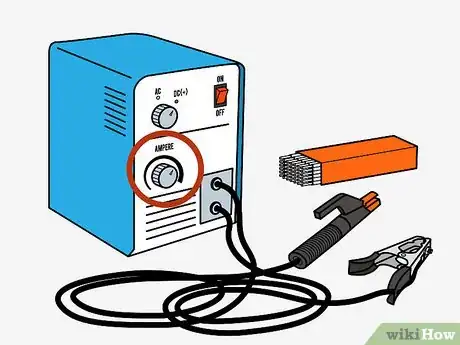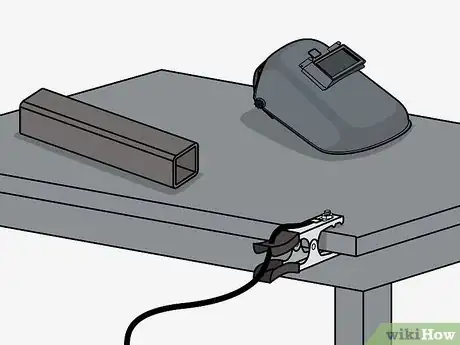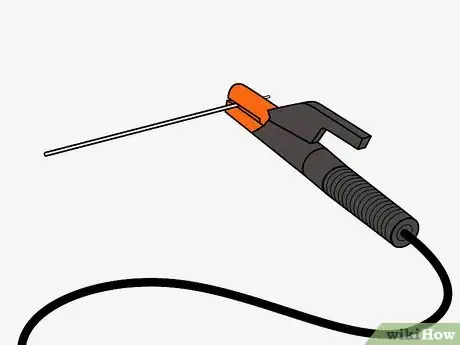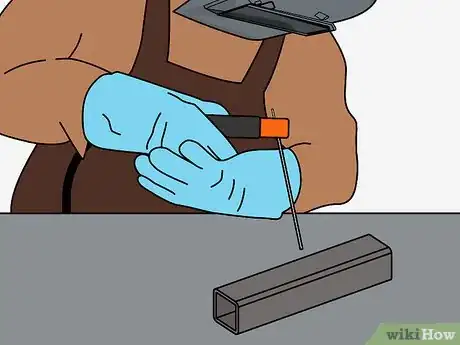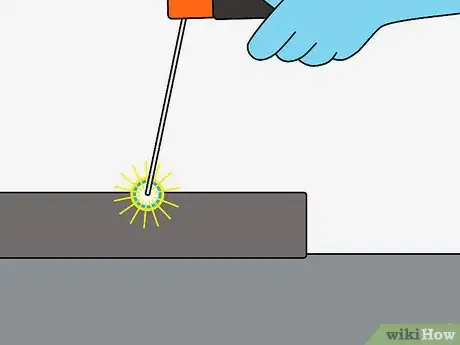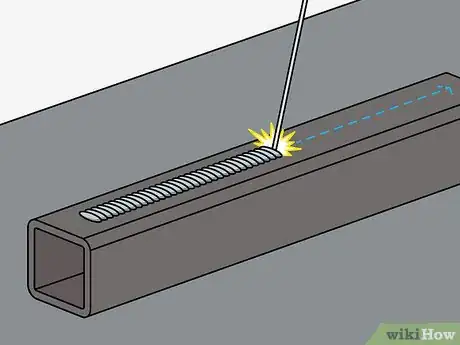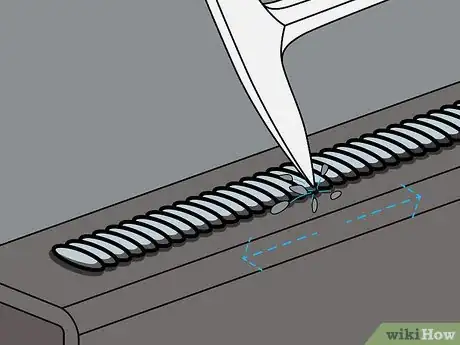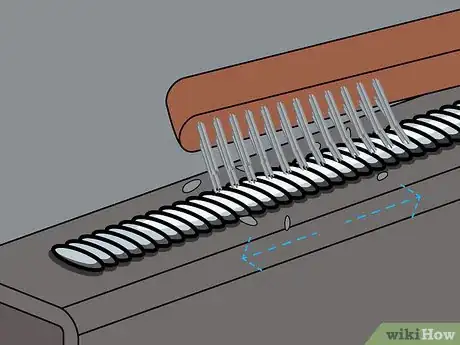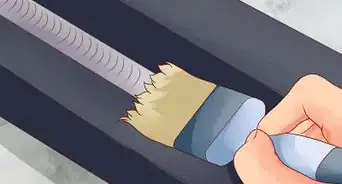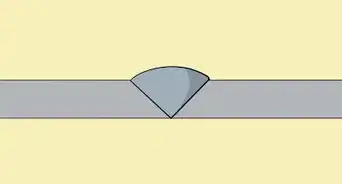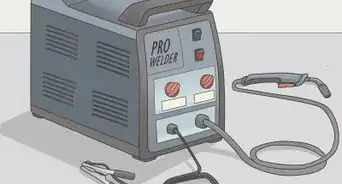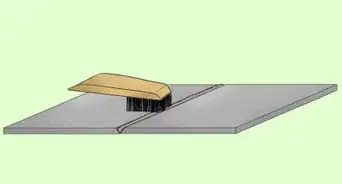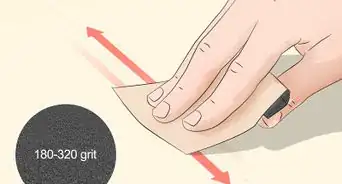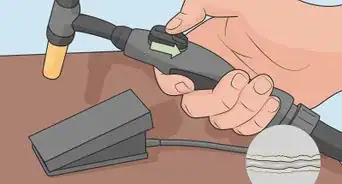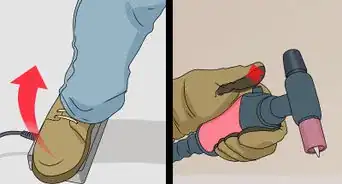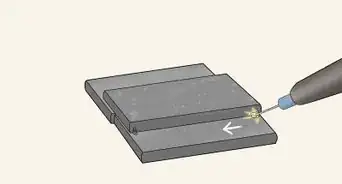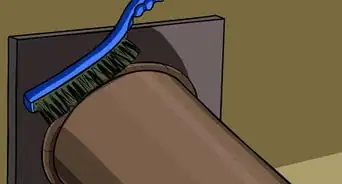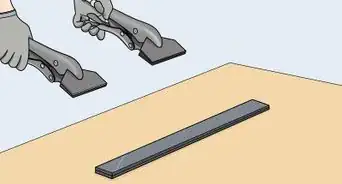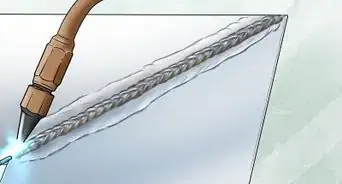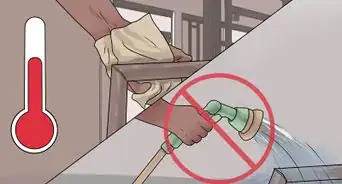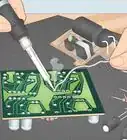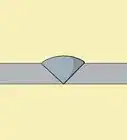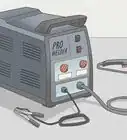This article was co-authored by wikiHow Staff. Our trained team of editors and researchers validate articles for accuracy and comprehensiveness. wikiHow's Content Management Team carefully monitors the work from our editorial staff to ensure that each article is backed by trusted research and meets our high quality standards.
There are 15 references cited in this article, which can be found at the bottom of the page.
wikiHow marks an article as reader-approved once it receives enough positive feedback. This article received 14 testimonials and 89% of readers who voted found it helpful, earning it our reader-approved status.
This article has been viewed 820,060 times.
Learn more...
Welding is the process of using electrical current to superheat and melt metal so that you can join two pieces of metal together. There are several ways to weld, but the two most popular ways to weld at home include gas metal arc welding, or MIG welding, and arc welding, otherwise known as stick welding. While welding can seem intimidating at first, it's actually fairly simple once you take the proper safety precautions and practice using your welding machine.
Steps
Staying Safe
-
1Purchase a welding helmet. The sparks and light that welding gives off is extremely bright and can harm your eyes. There’s also the possibility of metal debris or sparks flying into your face. Purchase an auto-darkening welding helmet online or at a hardware store to protect your eyes and face from the sparks and heat generated from the welding machine.[1]
-
2Get heavy duty welding gloves. Purchase welding gloves online or at a hardware store. Welding gloves are typically made of cow or pig hide and will protect your hands from electrical shock, heat, and radiation. Always wear gloves when welding something.[2]Advertisement
-
3Wear a leather apron. An apron will prevent sparks from the welding machine from making contact with your clothes or potentially burning you. Get a durable, non-flammable apron online or at a hardware store.[3]
-
4Work in a well-ventilated area. The process of welding contaminates the air with vapors and gases that are hazardous to inhale. You’ll want to work in an open space with open windows or doors while you weld.[4]
- Never weld galvanized steel as it produces dangerous gas.
-
5Inspect your welder before beginning. Look at all the wires, hoses, and connections on your welder. Replace any damaged or worn components before using the welder.
- Some welders require calibration at regular intervals. Always be sure that the calibration is up to date; there is no grace period.
Preparing the Metal for Welding
-
1Scrape any paint and rust off the metal before welding. Use 80-grit sandpaper, a wire brush, or an angle grinder with a flap disc and go over the surface of the painted metal. You can purchase the sandpaper or wire brush or rent an angle grinder at a hardware store or online. Continue to grind off the paint and rust until your metal is metallic and shiny looking.[5]
- If you’re using an angle grinder, be careful not to distort thin metal.
- If you’re working with thick metal, bevel the edges with an angle grinder to ensure the weld can fully penetrate.
- Paint and rust will inhibit the electrical connection created by the welder, and can also cause the weld to have porosity in it, which is unwanted
-
2Wipe down the metal with acetone. Your metal must also be free of any dust, dirt, or debris because they can inhibit your ability to make good welds. Saturate a cloth in acetone and wipe it over the entire surface of the metal. The acetone should remove any contaminants that could mess with your ability to weld.[6]
-
3Dry the metal with a clean rag. Rub over the surface of the metal, making sure to remove any of the acetone that was left over from washing it. Let the metal fully dry before you start to weld.
Using an MIG Welder
-
1Make sure that your MIG welder is set up properly. Make sure that your MIG welder has a wire on the spool. Look at the tip of the welding gun to make sure that it’s being properly fed up into the gun. Ensure that your shielding gas canisters are properly set up and that your welding machine is in proper working order.[7]
-
2Clamp your ground clamp to the table you're working on. Your MIG welder should have a grounding clamp that you need to clamp onto your table. This will prevent you from getting electrocuted if you end up touching your table.[8]
-
3Hold the welding gun with both hands. Rest one hand on the table that you’re welding on and use it to control the direction of the gun while you weld. Your other hand should be gripping the gun, with your index finger ready to press the trigger.[9]
- Remember to wear gloves when handling the welding machine.
-
4Position the tip of the welding gun on a 20-degree angle. Positioning the gun on a 20-degree angle against the piece of metal will help you penetrate into the metal as you weld. This is also commonly referred to as a push position.[10]
-
5Turn the welding machine on and press the trigger. Put your welding helmet down over your face and press the trigger on the gun. This should create a bright spark the end of your welding gun. Keep your face away from the weld so you don’t injure yourself or inhale any toxic fumes.
-
6Move the gun over the metal slowly to create the weld. Press the tip of the welding gun against the piece of metal. Sparks should start to be created by the welding gun. Leave the gun in a single spot for one or two seconds before you start moving it down your piece of metal.[11]
-
7Make tiny circles with your gun as you weld. Work your way down the metal, making tiny circles as you move the welding gun. As you move down your piece of metal, you'll start to see hot metal start to pool behind the tip of your welding gun. Once you’ve reached the end of your weld, let go of the trigger and turn off your welding machine.
- If you move the weld gun too slowly, you may create holes in your sheet of metal.
- If you move your weld gun too fast, you may not heat the metal hot enough to melt it and your weld will be very thin.
Using a Stick Welder
-
1Set the welding machine to DC positive. The polarity on your machine will determine if you’re welding with an alternating current (AC) or direct current (DC). The DC setting on your machine will have DC negative and DC positive. DC positive provides a large amount of penetration and is the setting that you should use if you're just starting out.[12]
- The AC setting is used when your power supply only has an AC output.
- DC negative results in less penetration and should be used on thin sheets of metal.
-
2Set the amperage on your stick welder. Take a look at the instructions or packaging of the “rod” or electrode that you plan on using for welding. They will have a recommended amperage on them depending on what material they are made of. Use the knob on your welding machine to set the machine to the amperage that it recommends on the electrode’s packaging.[13]
- If the rods provide an amperage range, split the difference. For instance, if the range is 100 to 150, use 125.
- The most common electrodes for steel include the 6010, 6011 and 6013.
-
3Ground your welding machine to the surface you're working on. Clean the surface first to ensure there will be a strong connection. Then, take your grounding clamp and apply it to the table that you're working on. This will prevent you from getting electrocuted while you weld.
-
4Place your rod inside of the welding gun. Some stick welders will have a clamp for their welding gun while others will have a more traditional looking welding gun. Place your rod into the tip of the welding gun and tighten the tip so that the rod stays in the gun. If you have clamps, put the welding rod in between the clamps and close them.[14]
-
5Hold your welding gun with two hands. Holding the gun with two hands will improve your precision and will help you weld straighter lines. Wrap your dominant hand over the top of the welding gun and use your other hand to support the welding gun from below.[15]
-
6Strike your rod against the metal. Tap the tip of the rod lightly onto the metal and sparks should start to form. The rod will act a lot like a match, and friction must be present before you can strike an arc. Once you see and hear sparks, you’ve successfully started your weld.[16]
-
7Make a straight line with the rod. Slowly move down the sheet of metal with your rod. As you go along in a line, the melting metal should form a pool behind your rod. This will be the same size as the weld. A proper weld or "bead" will be about 1⁄2 inch (1.3 cm) thick.
-
8Touch the metal with the rod for 1-2 seconds to tack weld. If you lift the rod off of the metal, it will stop creating sparks. You can hold the rod onto a piece of metal for 1-2 seconds to quickly create a rounded tack weld. This is useful if you need to create quick welds on certain pieces of metal.[17]
-
9Break the slag off with a hammer. After you create your weld, metal will form over the weld like a shell. This material is called slag and is incredibly hot. Lightly tap the slag with a hammer until it comes off in sheets.[18]
- Don’t slam the slag with a hammer, or hot pieces of metal can come flying off of your weld.
-
10Clean off the slag with a wire brush. Use a wire brush and rub back and forth over the weld. Clean off the remaining slag and make sure there is no metal debris left on the weld.[19]
Community Q&A
-
QuestionHow do I start up the electric welding machine and sort the settings?
 Community AnswerThe settings don't matter at the time you turn on the machine. Before you start to weld, the settings need to be set according to the thickness and type of metal you are welding.
Community AnswerThe settings don't matter at the time you turn on the machine. Before you start to weld, the settings need to be set according to the thickness and type of metal you are welding. -
QuestionWhat should I do after each bead is completed?
 Community AnswerThis depends on whether it's practice or not. If it's practice, then dip it in water. If it isn't for practice but for making an item, etc., then let it air dry.
Community AnswerThis depends on whether it's practice or not. If it's practice, then dip it in water. If it isn't for practice but for making an item, etc., then let it air dry. -
QuestionWhat should the ampere be for various thicknesses of metals?
 Community AnswerYou would have to look at a chart for a rough estimate of where to put your amperage to begin. For example, if I am using a stick wielder with 6013 stick and 16 gauge steel, then I would put my amperage at around 80.
Community AnswerYou would have to look at a chart for a rough estimate of where to put your amperage to begin. For example, if I am using a stick wielder with 6013 stick and 16 gauge steel, then I would put my amperage at around 80.
Things You’ll Need
- Welding helmet
- Welding gloves
- Leather apron
- 80-grit sandpaper, wire brush, or angle grinder with a flap disc
- MIG or stick welder
- Hammer
- Wire brush
References
- ↑ http://www.usaweld.com/Learn-How-to-MIG-Weld-s/416.htm
- ↑ http://www.globalspec.com/learnmore/manufacturing_process_equipment/safety_personal_protective_equipment/welding_gloves
- ↑ http://www.realworldsurvivor.com/2015/01/16/welding-workshop-stick-welding-beginners/#tim-reed-04
- ↑ https://www.ccohs.ca/oshanswers/safety_haz/welding/ventilation.html
- ↑ https://garage.eastwood.com/eastwood-chatter/how-to-prep-metal-for-welding-quick-tip/
- ↑ https://garage.eastwood.com/eastwood-chatter/how-to-prep-metal-for-welding-quick-tip/
- ↑ http://www.weldingtipsandtricks.com/how-to-mig-weld.html
- ↑ http://www.lincolnelectric.com/en-us/support/process-and-theory/pages/grounding-safety-detail.aspx
- ↑ http://www.mig-welding.co.uk/learning-mig.htm
- ↑ http://www.mig-welding.co.uk/learning-mig.htm
- ↑ https://www.youtube.com/watch?v=jtlOOOTpZYM&feature=youtu.be&t=1m34s
- ↑ http://weldingproductivity.com/article/ac-vs-dc/
- ↑ http://www.realworldsurvivor.com/2015/01/16/welding-workshop-stick-welding-beginners/#tim-reed-04
- ↑ https://www.youtube.com/watch?v=NjYPJ-CxxW4&feature=youtu.be&t=3m42s
- ↑ https://www.youtube.com/watch?v=NjYPJ-CxxW4&feature=youtu.be&t=5m20s
- ↑ http://www.realworldsurvivor.com/2015/01/16/welding-workshop-stick-welding-beginners/#tim-reed-04
- ↑ https://www.youtube.com/watch?v=NjYPJ-CxxW4&feature=youtu.be&t=6m27s
- ↑ https://www.youtube.com/watch?v=NjYPJ-CxxW4&feature=youtu.be&t=7m9s
- ↑ https://www.youtube.com/watch?v=NjYPJ-CxxW4&feature=youtu.be&t=7m42s
About This Article
Before you attempt to weld, purchase heavy-duty welding gloves and an auto-darkening welding helmet to protect you from sparks and metal debris. Scrape any paint and rust off of the metal with a grinder or sandpaper, then wipe the metal down with acetone. If you’re using a MIG welder, attach your grounding clamp to the table you’re working on and hold the welding gun in both hands at a 20° angle to the metal you’re welding. Press the trigger to turn on the machine, and move the gun slowly over the metal, working in a circular motion. Keep reading to learn how to use a stick welder!
